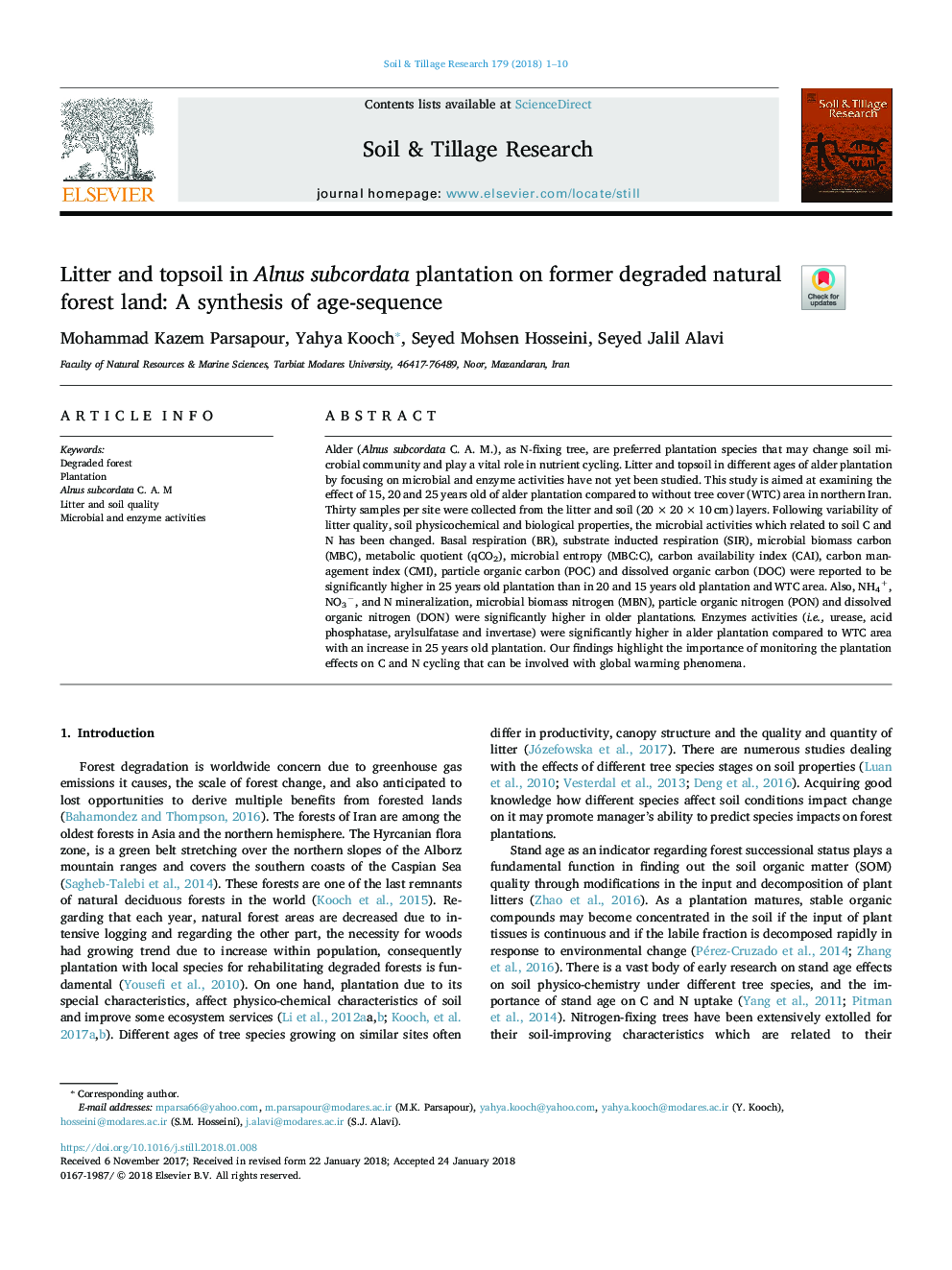| Article ID | Journal | Published Year | Pages | File Type |
|---|---|---|---|---|
| 6773057 | Soil and Tillage Research | 2018 | 10 Pages |
Abstract
Alder (Alnus subcordata C. A. M.), as N-fixing tree, are preferred plantation species that may change soil microbial community and play a vital role in nutrient cycling. Litter and topsoil in different ages of alder plantation by focusing on microbial and enzyme activities have not yet been studied. This study is aimed at examining the effect of 15, 20 and 25 years old of alder plantation compared to without tree cover (WTC) area in northern Iran. Thirty samples per site were collected from the litter and soil (20â¯Ãâ¯20â¯Ãâ¯10â¯cm) layers. Following variability of litter quality, soil physicochemical and biological properties, the microbial activities which related to soil C and N has been changed. Basal respiration (BR), substrate inducted respiration (SIR), microbial biomass carbon (MBC), metabolic quotient (qCO2), microbial entropy (MBC:C), carbon availability index (CAI), carbon management index (CMI), particle organic carbon (POC) and dissolved organic carbon (DOC) were reported to be significantly higher in 25 years old plantation than in 20 and 15 years old plantation and WTC area. Also, NH4+, NO3â, and N mineralization, microbial biomass nitrogen (MBN), particle organic nitrogen (PON) and dissolved organic nitrogen (DON) were significantly higher in older plantations. Enzymes activities (i.e., urease, acid phosphatase, arylsulfatase and invertase) were significantly higher in alder plantation compared to WTC area with an increase in 25 years old plantation. Our findings highlight the importance of monitoring the plantation effects on C and N cycling that can be involved with global warming phenomena.
Keywords
Related Topics
Physical Sciences and Engineering
Energy
Renewable Energy, Sustainability and the Environment
Authors
Mohammad Kazem Parsapour, Yahya Kooch, Seyed Mohsen Hosseini, Seyed Jalil Alavi,
